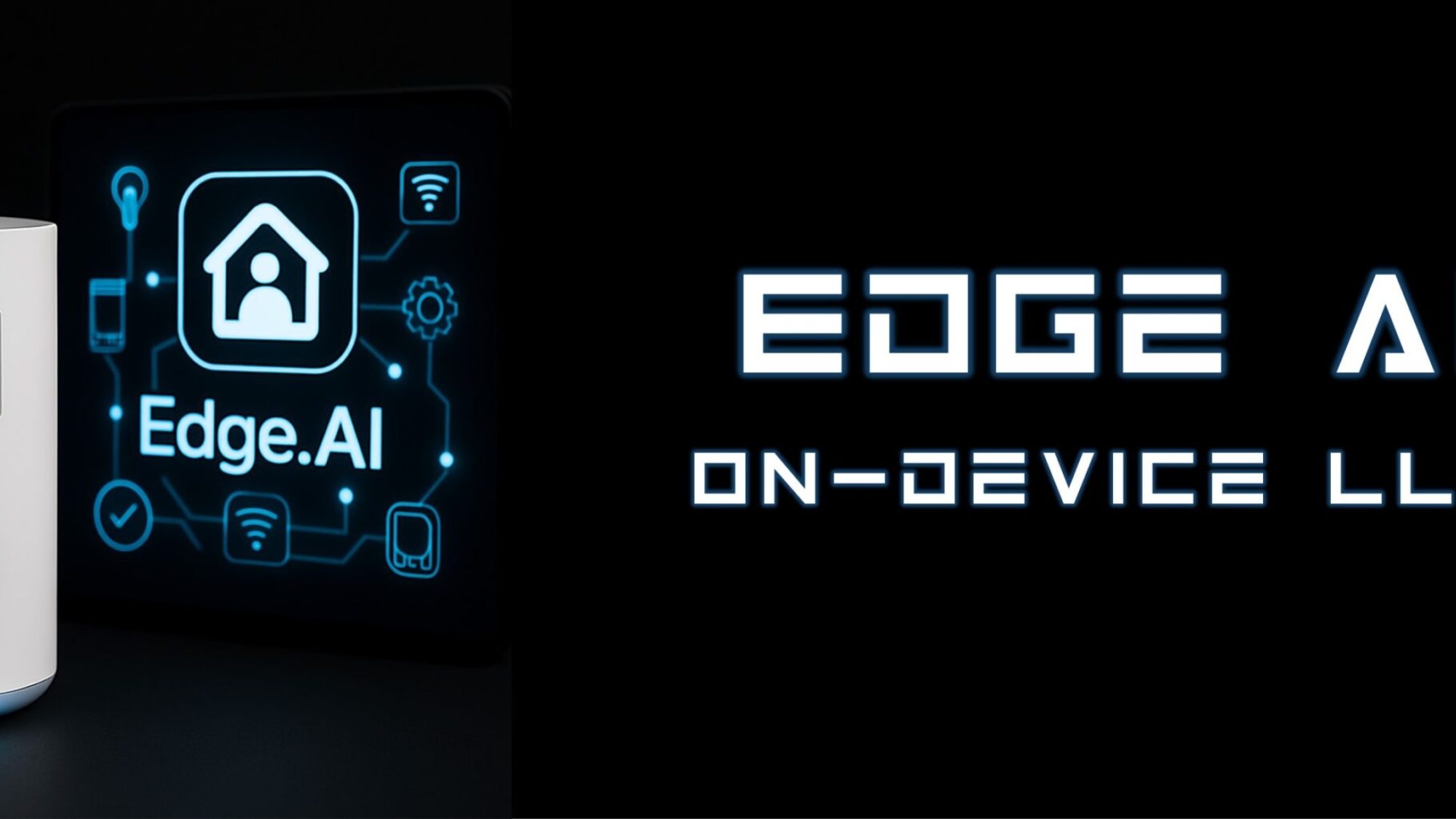Why Edge AI Matters Now—Especially at Home
Let’s face it: smart homes shouldn’t rely entirely on cloud servers to turn on a fan or switch off a light. We live in a country where internet stability varies, and privacy is a growing concern. That’s where Edge AI becomes a game-changer—especially when powered by on-device Large Language Models (LLMs).
This isn’t just future talk. It’s real, it’s accessible, and it works today.
1. What Is Edge AI?
Edge AI means the intelligence runs on your own devices—not on some remote server.
It works on local processors like your laptop, router, or microcontroller and responds to real-world inputs like temperature, sound, or motion.
Why it’s a big deal:
- Real-time speed – zero lag
- Offline operation – perfect when internet drops
- Privacy-first – no data leaves the premises
- No cloud bills – use once, no subscription
2. What’s an On-Device LLM?
An On-Device LLM is a trimmed-down version of large AI models (like ChatGPT) that runs right inside your devices.
That means no external API calls. The entire interaction—voice, text, automation—happens locally.
Some practical models:
- Phi-2 – small, multilingual, works well on laptops
- Mistral 7B – more powerful, great for desktops
- TinyLLaMA – perfect for Raspberry Pi or ESP32 boards
These models can help us build smarter routines at home using natural language. They even understand Hinglish or local dialects when finetuned.
3. Why This Is Ideal for Indian Homes?
Let’s break it down from an Indian perspective:
- Internet isn’t always reliable—especially in Tier-2/Tier-3 cities.
- Privacy matters—no more uploading voice data to unknown servers.
- Regional support—train models in Marathi, Hindi, or Tamil.
- Zero recurring cost—no tokens, no APIs, no renewals.
Edge AI at home means true independence from cloud limitations.
4. What Tools & Hardware We Can Use?
Here’s a practical starter toolkit:
Tools:
| Tool | Purpose |
|---|---|
| LM Studio | GUI for running models locally |
| Ollama | CLI to manage on-device models |
| Home Assistant | Smart home control hub |
| OpenWRT | AI-capable custom router firmware |
Recommended Hardware:
- 💻 Laptops (i5/i7 with 8–16GB RAM)
- 🍓 Raspberry Pi 5 or Jetson Nano
- 📱 Android phones with high-end Snapdragon chips
Real-World Use Cases for Indian Homes
| Appliance | Smart Edge-AI Feature |
|---|---|
| Fan | Auto-adjust speed based on room temperature + presence |
| Light | Switch on when room gets dark or senses motion |
| TV | Automatically mute on incoming calls |
| Router | Alert when new/unknown devices connect |
And yes, all of this can be done offline, without cloud sync.
Things to Keep in Mind
| Issue | How to Fix |
|---|---|
| High memory usage | Use quantized .gguf models (Q4_0 or Q5) |
| Model slow to respond | Upgrade SSD or RAM; reduce model size |
| Language issues | Train LoRA adapters for dialects |
| Compatibility problems | Stick to formats like .gguf, .onnx |
Beginner Tips to Get Started
- Start simple: Try automating just one light or fan.
- Use LM Studio to test LLMs without writing code.
- Use Node-RED or Home Assistant for visual workflows.
- Look for community projects on GitHub or Reddit (
r/LocalLLaMA).
Edge AI is no longer reserved for research labs or big tech companies. It’s available to us—engineers, makers, and homeowners—who want local control and smarter environments without giving away our data or relying on cloud infrastructure.
For Indian homes, it’s more than just automation—it’s personal, secure, and offline intelligence built on our terms.

